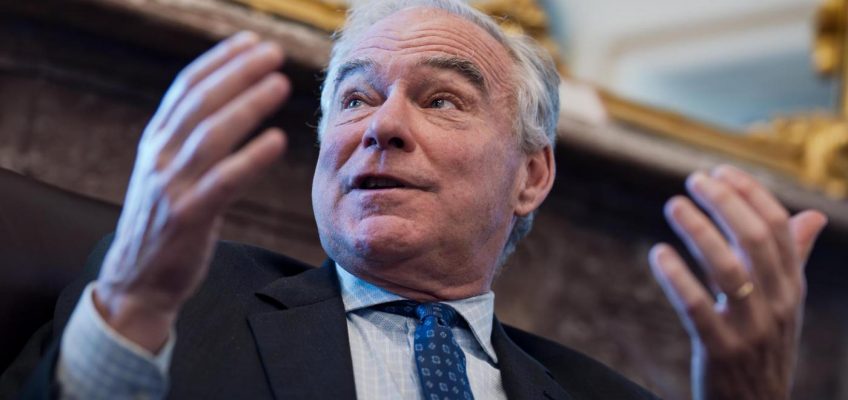By JOHN RABY
CHARLESTON, W.Va. (AP) — A federal appeals court on Tuesday overturned a landmark decision in West Virginia that had rejected attempts by an opioid-ravaged area to be compensated by U.S. drug distributors for a influx of prescription pain pills into the region.
Related Articles
MacKenzie Scott gives $60 million to the Center for Disaster Philanthropy
OpenAI may move forward with new business structure, partnership with Microsoft, regulators say
Elon Musk launches Grokipedia to compete with online encyclopedia Wikipedia
Layoffs are piling up, raising worker anxiety. Here are some companies that have cut jobs recently
Jury deliberations start in trial of Illinois deputy who killed Sonya Massey
The 4th U.S. Circuit Court of Appeals in Richmond, Virginia, ruled that a lower court judge erred when he said West Virginia’s public nuisance law did not apply to the lawsuit involving the distribution of opioids.
“West Virginia law permits abatement of a public nuisance to include a requirement that a defendant pay money to fund efforts to eliminate the resulting harm to the public,” the 4th Circuit wrote. “West Virginia has long characterized abatement as an equitable remedy.”
The ruling sends the case back to U.S. District Court in Charleston for “further proceedings consistent with the principles expressed in this opinion.”
Thousands of state and local governments have sued over the toll of opioids. The suits relied heavily on claims that the companies created a public nuisance by failing to monitor where the powerful prescriptions were ending up. Most of the lawsuits were settled as part of a series of nationwide deals that could be worth more than $50 billion. But there wasn’t a decisive trend in the outcomes of those that have gone to trial.
In July 2022, U.S. District Judge David Faber ruled in favor of three major U.S. drug distributors who were accused by Cabell County and the city of Huntington of causing a public health crisis by distributing 81 million pills over eight years in the county. AmerisourceBergen Drug Co., Cardinal Health Inc. and McKesson Corp. also were accused of ignoring the signs that Cabell County was being ravaged by addiction.
Faber said West Virginia’s Supreme Court had only applied public nuisance law in the context of conduct that interferes with public property or resources. He said to extend the law to cover the marketing and sale of opioids “is inconsistent with the history and traditional notions of nuisance.”
Last year the federal appeals court sent a certified question to the state Supreme Court, which states: “Under West Virginia’s common law, can conditions caused by the distribution of a controlled substance constitute a public nuisance and, if so, what are the elements of such a public nuisance claim?”
The state justices declined to answer. That 3-2 opinion in May returned the case to the federal appears court.
“We hold that West Virginia’s highest court would not exclude as a matter of law any common law claim for public nuisance caused by the distribution of a controlled substance,” the 4th Circuit wrote Tuesday. “Therefore, we necessarily conclude that the district court erred when it held that a public nuisance claim based on the distribution of opioids was per se legally insufficient under West Virginia law.”
During arguments earlier this year before the state Supreme Court over the certified question, Steve Ruby, an attorney for the companies, called “radical” the plaintiffs’ arguments to extend the public nuisance law to opioid manufacturers. If allowed, he said, that would “create an avalanche of activist litigation.”
The appeals court previously noted that the West Virginia Mass Litigation Panel, which works to resolve complex cases in state court, has concluded in several instances that opioid distribution “can form the basis of a public nuisance claim under West Virginia common law.”
In his 2022 decision, Faber also said the plaintiffs offered no evidence that the defendants distributed controlled substances to any entity that didn’t hold a proper registration from the U.S. Drug Enforcement Administration or the state Board of Pharmacy. The defendants also had suspicious monitoring systems in place as required by the Controlled Substances Act, he said.
But the 4th Circuit Court found Tuesday that the lower court “misconstrued the distributors’ duties” under the Controlled Substances Act.
The plaintiffs had sought more than $2.5 billion that would have gone toward opioid use prevention, treatment and education over 15 years.
In 2021 in Cabell County, an Ohio River county of 93,000 residents, there were 1,059 emergency responses to suspected overdoses — significantly higher than each of the previous three years — with at least 162 deaths.




